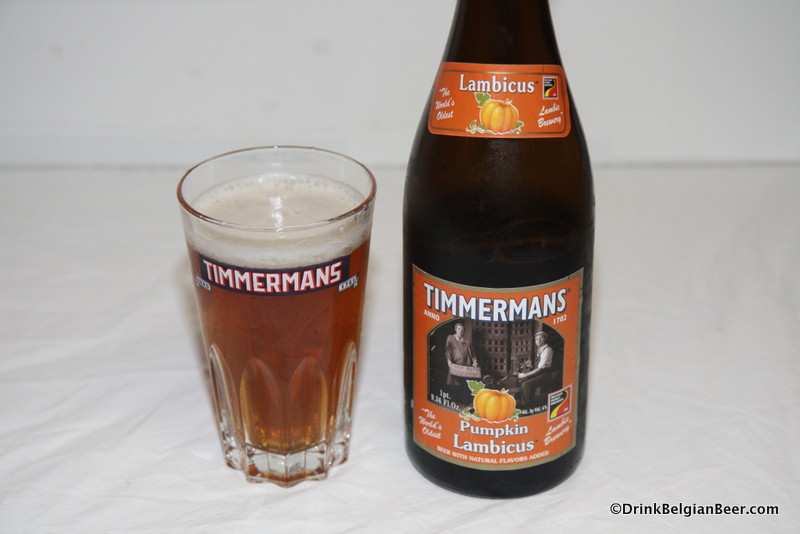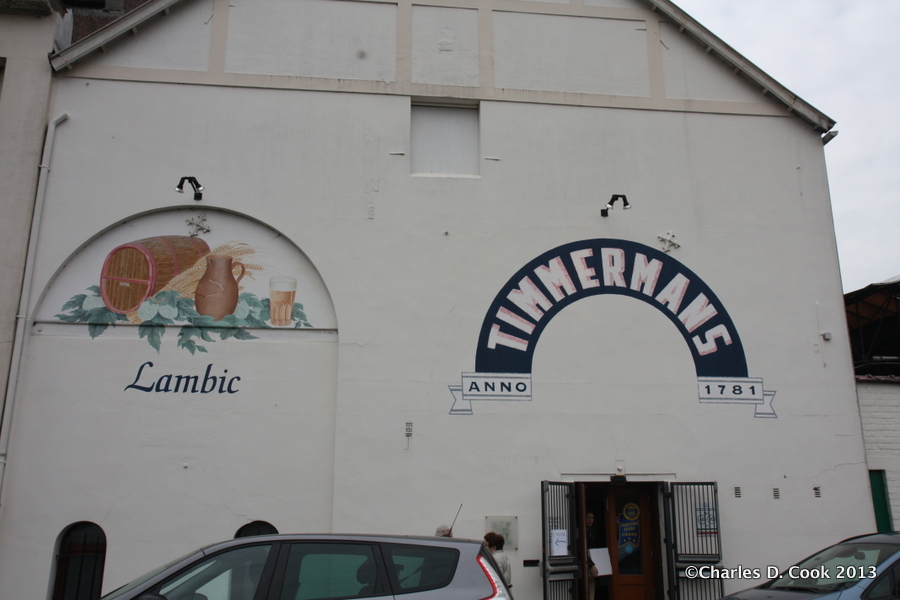
Van Herreweghen continued: “About the brewery now: we have three kinds of barrels. There is oak, chestnut, and some others that held Port wine for over 100 years. We use chestnut, as it is neutral and imparts no taste to the lambic, so you can know what a lambic really tastes like. If you want the real taste of lambic, you have to use chestnut.
Oak gives a vanilla-like flavor usually described as ‘oaky’ and, of course, this is the most common type of wood used by lambic makers. Oak does, of course, give a very good taste. The used Port barrels are both in chestnut and oak, and you can really taste and smell a Port character in the lambic from these barrels.”

Speaking about kriekenlambic and Oude Kriek, Van Herreweghen had this to say: “For me a real kriek should have real cherries, with the stones (aka pits) in them. Just like almonds, for example. Also, a sweet kriek is a contradiction in terms. Kriek should always be sour, as kriek means sour cherry in the Flemish language. We add 400 grams of cherries per liter to our kriekenlambic. In fact, 8,000 kilograms of cherries will arrive here tomorrow.”
As far as the origin of the cherries, Van Herreweghen remarked: ”We taste the cherries, and ultimately, the origin is less important than the quality, and of course the taste of the cherries. We get them from Belgium, the Czech Republic, Germany, and Poland. The aroma can be slightly different from year to year, so we choose by taste. Of course, any harvest of any product can be different from year to year. I think it’s best for a brewer to be able to buy his raw materials from where he chooses, rather than being constrained by geography.”

As far as the barrels at Timmermans, Van Cutsem remarked: “The wood is very important, and three years ago, we purchased new casks from AXA, a famous Port house in Portugal that has very good barrels. Also, we are going to install about fifteen foeders (huge barrels) here in 2013. These will be in the 65-hectoliter size: 6,500 liters each. Most of our current barrels are in the 650-liter size, so this new program will greatly increase the amount of lambic and kriekenlambic we will produce here. In fact, we will begin to offer lambic and kriekenlambic on draft at some point.”

That’s great news! A few cafes in the Payottenland and Brussels do offer lambic and kriekenlambic on draft, usually either served via handpump or from a plastic bag-in-box. Girardin and Oud Beersel are most often seen, while a few special places have De Cam, 3 Fonteinen and Cantillon lambic from time to time. It’s a rare treat to be able to taste straight lambic and kriekenlambic, and Timmermans’ intention to offer some of theirs in this way shows a dedication to their artisanal program. I’d also love to see them do a frambozenlambic-a straight raspberry lambic. The color and taste of raspberry uses fades much more quickly than with sour cherries, but when fresh, it can be fabulous.

“We also have some 20 and 30-liter test barrels. These work well for this purpose, as lambic matures much more quickly, because the proportion of liquid in contact with the wood is much higher than in a large barrel,” Van Herreweghen told me. “So, we have very big plans here. We will do small-batch bottlings of Oude Geuze and Oude Kriek from lambics matured in chestnut barrels, and the same for oak barrels. We will have much more lambic and kriekenlambic, so we can produce, blend, and bottle much more Oude Geuze and Oude Kriek. We’ll also be able to make more beer like the Lambicus Blanche (a sort of witbier/white beer infused with lambic) and Pumpkin Lambicus, and possibly some other brews blended with lambic as well.”

The Pumkin Lambicus is, as the name suggests, a pumpkin-based beer blended with lambic. I’ll admit that I am not a big fan of pumpkin beers in general, but this one is really good. It’s moderately tart and without any overbearing spiciness, so it appeals to tart beer lovers and novices alike.


Leave a Reply